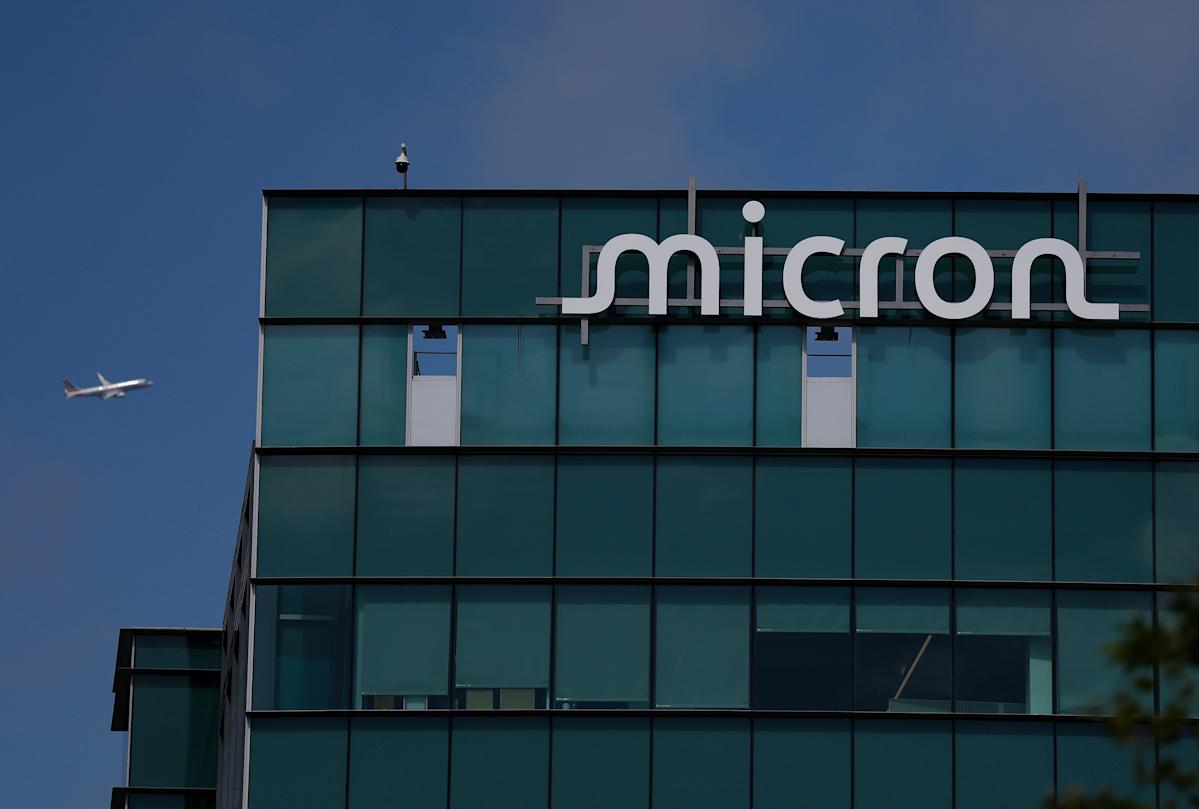Micron’s Q4 earnings surpass Wall Street’s expectations in latest test of AI trade
Micron (MU) reported fiscal fourth quarter earnings results after the bell Tuesday that surpassed Wall Street’s expectations — a positive signal for the AI trade and for investors hoping the chipmaker’s stock can sustain its recent upswing.
Micron’s fiscal fourth quarter revenue of $11.3 billion was ahead of the $11.15 billion expected by analysts polled by Bloomberg. The Idaho-based memory chipmaker — whose semiconductors are used alongside Nvidia’s chips in AI data centers — saw adjusted earnings per share of $3.03 for the three months ending Aug. 28, more than the $2.84 projected.
Micron’s performance also surpassed its boosted outlook for the quarter provided in August.
The beat was fueled by the AI data center boom, company executives said, with data centers representing 40% of the chipmaker’s total revenue in the fourth quarter.
The stock briefly climbed 2% following the results in after-hours trading to hit $171.50, above its all-time intraday high last week, but later pared gains.
Micron’s guidance for its 2026 fiscal first quarter was also above expectations. The company guided for first quarter revenue between $12.2 billion and $12.8 billion, more than the $11.9 billion expected by analysts tracked by Bloomberg. The chipmaker said it expects first quarter adjusted earnings per share to fall between $3.60 and $3.90, ahead of the $3.05 projected.
“Over the coming years, we expect trillions of dollars to be invested in AI, and a significant portion will be spent on memory,” CEO Sanjay Mehrotra said in call with analysts following the company’s results. “As the only US-based manufacturer of memory, Micron is uniquely positioned to benefit from the AI opportunity ahead.”
Micron has been one of a number of tech giants that have deepened its investments in the US amid pressure from the Trump administration. The firm in June said it will invest $200 billion in its US memory chipmaking facilities.
The company is one of three leading memory chipmakers. Its rivals are Korea-based SK Hynix (000660.KS) and Samsung Electronics (005930.KS), but the latter has fallen behind in the AI race.
Micron’s DRAM (dynamic random access memory) chips are used for short-term memory storage in everything from personal computers to AI data centers and historically have accounted for the majority of the company’s revenue.
One kind of Micron’s DRAM tech — its HBM (high bandwidth memory) chips, which include multiple vertically stacked DRAM semiconductors — has been crucial to the AI buildout and are used alongside GPUs (graphics processing units) in Nvidia’s (NVDA) AI systems for data centers.



Leave a Comment
Your email address will not be published. Required fields are marked *